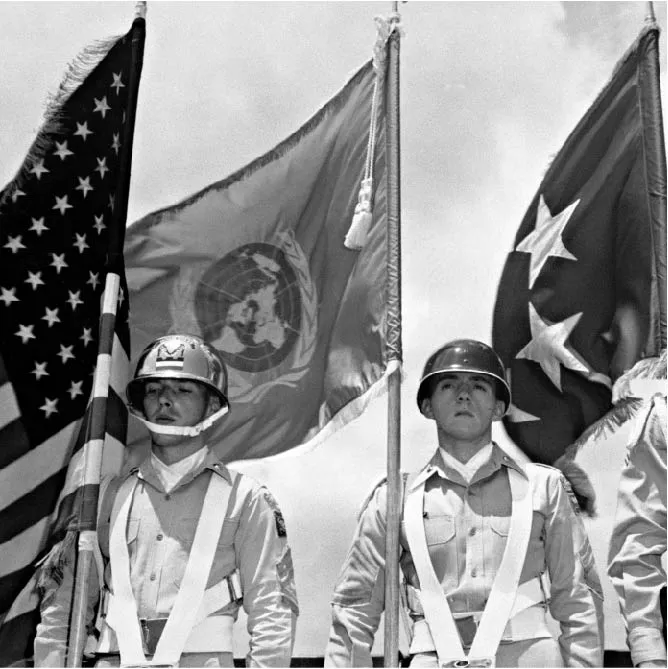Educator Overview
Case Overview
Set in September 1950. At the conclusion of World War II, Korea—formerly under Japanese control—was divided at the thirty-eighth parallel into a U.S.-occupied south and a Soviet-occupied north. Although the division was meant to be temporary, by 1948 both countries had declared independence. North Korea became a Soviet-supported communist state; South Korea was supported by the United States. Two years later, North Korea invaded South Korea in an attempt to bring the entire peninsula under its control. After several weeks of fighting, UN and South Korean forces were defending an area called the Pusan perimeter, in the southernmost portion of the peninsula. General Douglas MacArthur, who was commanding U.S. and allied forces as part of a UN mission, was also making plans for a landing at Inchon, near the South Korean capital of Seoul, in order to surprise North Korean troops and recapture Seoul.
Anticipating the possible success of the Inchon landing, The UN secretary-general has convened the Security Council to discuss the situation in Korea, specifically whether to extend the UN military intervention north of the thirty-eighth parallel in an attempt to unify the Korean Peninsula. Security Council members will have to weigh the risks of such an intervention, and whether intervention offers a better opportunity to form a durable peace than stopping at the thirty-eighth parallel would.
Decision Point
The UN secretary-general has convened the Security Council to discuss the situation in Korea, specifically whether to extend the UN military intervention north of the thirty-eighth parallel in an attempt to unify the Korean Peninsula. The secretary-general has made clear that this decision depends on the success of the Inchon landing and victory in South Korea. Security Council members will need to consider a few critical questions. First, what is at stake in the conflict? Is it just a Korean national issue fueled by north-south rivalry, each side seeking to lead a unified nation, or could the conflict become a major flash point in the Cold War? Second, what are the chances of Soviet or Chinese intervention if UN forces invade North Korea? Finally, does reunifying Korea offer a better prospect of a durable peace than stopping at the thirty-eighth parallel would?
Learning Goals
CFR Education simulations use a variety of pedagogical tools to create an effective, meaningful, and memorable learning experience for students that builds their global literacy. Students will develop crucial skills such as critical thinking, communication, collaboration, and creativity. Students will complete authentic assessments that feel relevant: instead of five-paragraph essays and book reports, students will write policy memos and participate in a role-play of a meeting of a foreign policy–making body. There are no right or wrong answers in actual policy deliberations, and there are none here, either; students will walk away from this experience with an appreciation for the complexity of policy questions.
In this simulation, students will learn about the UN Security Council, as well as meeting these learning outcomes specific to this simulation:
- Students will understand the factors that led to the Korean War and what led to the UN Security Council approving military intervention.
- Students will consider key disagreements within the UN Security Council, particularly regarding the role of the United States and the appropriate response to the war.
- Students will evaluate the options available to the UN Security Council related to intervention above the thirty-eighth parallel.
Concepts and Issues
Concepts
- Alliances
- Dispute resolution
- Interests versus values
- U.S. military options
- Civil war
- Great power rivalry
- Balance of power
- International law
Issues
- U.S. support for democratic governance
- Costs, benefits, and risks of military interventions
- U.S. interests in East Asia
- The UN Security Council and the U.S. role at the United Nations
- Early flash points in the Cold War
- Security and diplomacy in Northeast Asia
- Chinese and Soviet support of North Korea
